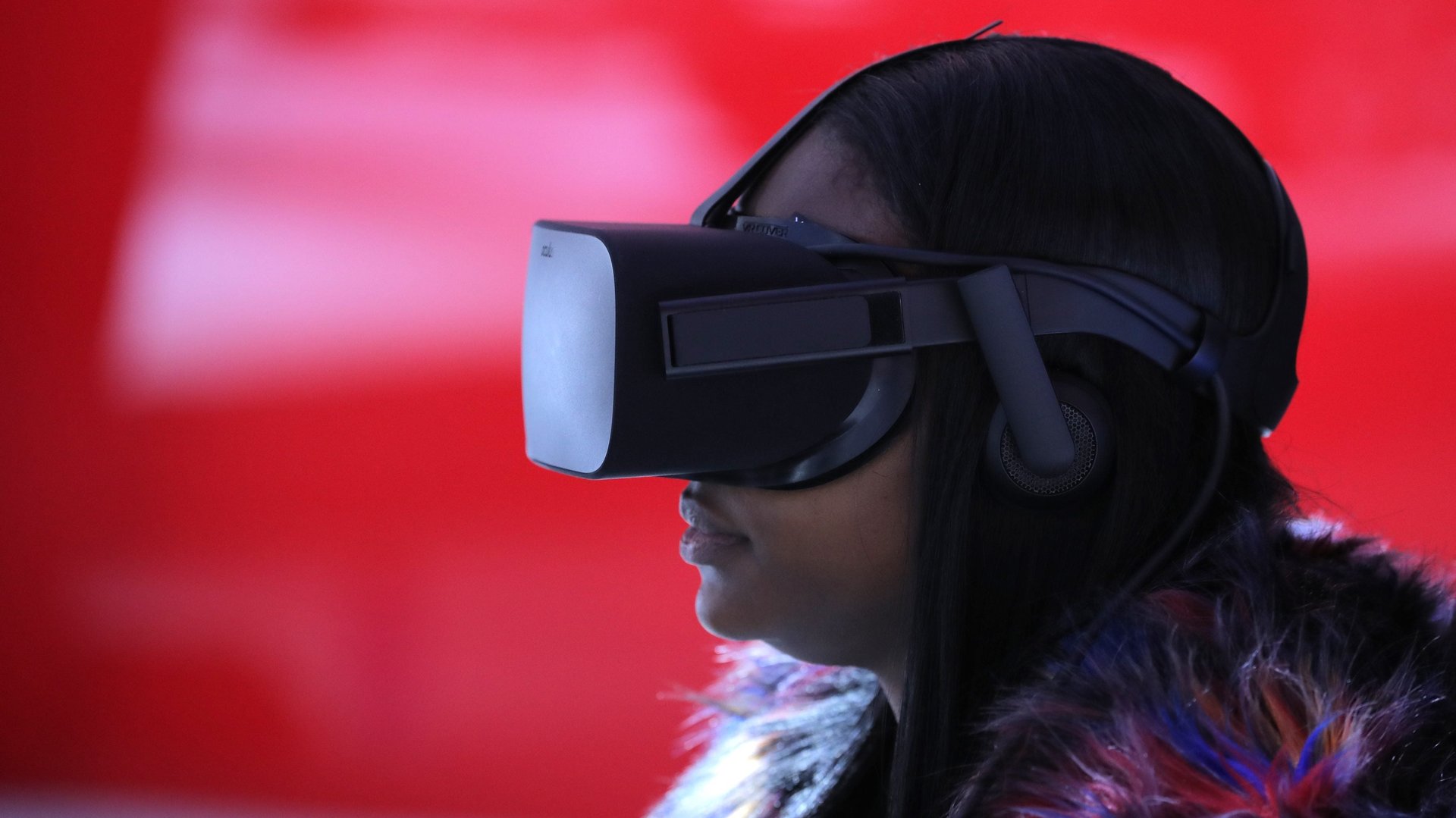Consulting firms are betting on unproven VR diversity trainings
Since 2018, every manager at consulting firm PricewaterhouseCoopers has taken a course on inclusive leadership. Normally, newly minted managers sit for a two-hour class with up to 60 peers, discussing how familiarity, comfort, and trust influence decisions on hiring, staffing, and performance evaluations. Those who can’t make it click through an online version. But last February, PwC moved some of these lessons to virtual reality.


Since 2018, every manager at consulting firm PricewaterhouseCoopers has taken a course on inclusive leadership. Normally, newly minted managers sit for a two-hour class with up to 60 peers, discussing how familiarity, comfort, and trust influence decisions on hiring, staffing, and performance evaluations. Those who can’t make it click through an online version. But last February, PwC moved some of these lessons to virtual reality.
Instead of talking about the issues, the bosses donned VR headsets and met with simulated colleagues to make decisions about who to hire, how to staff a project, and how to evaluate employee performance. They moved through the choose-your-own-adventure-style conversations by picking from a set of possible responses, which they read out loud to heighten the sense of realism. Afterward, the software program offered feedback on the decisions they made.
Since an initial test run last year, PwC has put 3,000 of its employees through the VR training, and the firm is working with clients to offer similar experiences. It’s not the only company trying it out: Leadership consulting firm DDI has launched its own VR training on diversity and inclusion, as have Red Fern Consulting and BCT Partners. Companies like Perspectives and Live in Their World have sprung up to build specialized VR trainings. But while it’s clear the concept has captured corporate imaginations, it’s less certain whether lessons learned in virtual reality will stick in real life.
As a starting point, it’s hard to tell whether any diversity training actually works to transform discriminatory behavior. Their lessons, whether delivered in-person or through an online course, tend not to last and in some cases actually backfire. One set of Wharton researchers found that diversity trainings can convince participants that discrimination is real, but reported little evidence that those new converts act any differently as a result.
But maybe the problem lies in the way that trainings are designed. Virtual reality can take a fundamentally different approach to teaching than a standard classroom lesson, allowing participants to role-play challenging scenarios or even occupy the perspective of another person. For example, in 1000 Cut Journey, a collaboration between researchers at Columbia and Stanford that debuted at the Tribeca Film Festival, users take on the identity of a Black man named Michael Sterling experiencing racism as a child, teen, and adult to gain a more visceral understanding of racial injustice.
At PwC, VR trainees reported they felt 3.75 times more emotionally connected to the lesson they had learned than classroom learners. The company also reported significant improvements in focus during the VR sessions, and in participants’ self-reported confidence in discussing and applying the concepts they had explored. Plus, amid a global pandemic, the chance to offer an immersive experience for isolated employees is even more alluring.
“The maturity of this concept is moving very quickly, forced by the current situation with everyone being at home,” said Scott Likens, who leads PwC’s emerging technologies division. “We found that people act differently in VR than they do in a video hangout. We found that they’re more open. It’s a safer space.”
But backing up big claims about VR’s promise in diversity training is a bigger challenge. All the data PwC released is self-reported by participants. Likens said the firm will release more objective measures—on biometric responses and changes in employee behavior—later on.
“Asking if someone enjoyed the training is different than measuring the efficacy of the training itself,” said Alexandra Kaplan, a PhD candidate at the University of Central Florida who conducted a meta-analysis of studies measuring the effectiveness of VR in all kinds of training, from fixing an airplane propeller to preparing for a job interview. She found that the existing body of research is rather thin, and the evidence that exists doesn’t show that the technology works any better than traditional classroom lessons.
Lasse Jensen, a PhD student at the University of Copenhagen who conducted a similar meta-analysis, reached the same conclusion. He said that in the end, the training medium is not more important than other factors, like the quality of the lesson.
Here, Jensen argues, old-fashioned classroom teachers may have an advantage over VR. “When instructors can’t edit the materials themselves and fit them to the right level for the students…it always becomes a bit bad,” Jensen said. “This is completely missing in VR because it’s so expensive to make one simulation that you can’t easily adjust it afterward.”
The current lack of evidence for VR’s superiority doesn’t mean that the technology won’t work. But as companies invest in new trainings, they’ll be working off a hunch more than hard science.